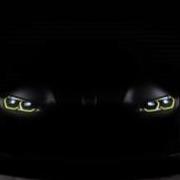About #LiNeX
- Birthday 01/10/2000
Title
-
Owner #ThunderZM
Informations
-
Steam
que366
-
Gender
Male
-
Interests
Enjoy life.
-
City
Dubai
Recent Profile Visitors
10,261 profile views
#LiNeX's Achievements
-
fadyyousef275 started following #LiNeX
-
This post cannot be displayed because it is in a password protected forum. Enter Password
-
Read more
bro im fustrated that time thats why i write some abusing things pls forgive me and accept my request and i know all rules
-
This post cannot be displayed because it is in a password protected forum. Enter Password
-
Dubai: Going to the Moon in 2024 will pave the way to accomplish the UAE’s mission of sending humans to Mars by 2117. This — in a nutshell — is the objective of the first Arab mission to explore the Moon, Adnan AlRais, Mars 2117 Programme Director, said during Sunday’s Press briefing on the Emirates Lunar Mission. Adnan AlRais: The Emirates Lunar Mission is part of the new 2021-2031 strategy launched by the Mohammed bin Rashid Space Centre (MBRSC). His Highness Sheikh Mohammed bin Rashid Al Maktoum, Vice-President and Prime Minister of the UAE and Ruler of Dubai, had announced on September 29 that the UAE would launch an Emirati-made rover that would land on the surface of the moon by 2024. The rover was named “Rashid”, after the late Sheikh Rashid bin Saeed Al Maktoum, the builder of modern Dubai and one of the UAE’s Founding Fathers. The rover is set to land in an area on the Moon’s surface that has not been explored by previous lunar exploration missions. If successful, the UAE will become the first Arab and only the fourth country in the world to land on the Moon, after the United States, the former Soviet Union and China. Lunar gateway to Mars AlRais noted that in order for the UAE to realise its strategic programme of having a human colony in Mars, the country has to build its capacity in space missions. He said: “The Emirates Lunar Mission paves the way for the realisation of the Mars 2117 Programme’s strategy. The mission will provide us with answers and data that define the course of our mission to explore Mars and benefit humanity.” He further explained: “For a road map to accomplish future human missions, we need to first go to the moon to develop a lunar gateway and develop robotics missions to enhance technologies and create new discoveries that will help us in the future to achieve our ultimate goal, which is basically sending humans to Mars and building a settlement there.” AlRais had earlier said Emirates Lunar Mission “is not an easy one, but every risk is a learning opportunity”. “Developing local knowledge through practical projects is very important for us, because we are able to transform challenges to opportunities as our leaders have taught us.” He added: “Rashid, the lunar rover, will conduct numerous scientific tests on the surface of the Moon that will contribute to making qualitative developments in the fields of science, communication technologies and robotics — not just for the UAE, but also for the worldwide scientific community. The lunar mission will also create a conducive environment for space entrepreneurs and inspire the UAE and Arab youth to take up space sciences and contribute towards making the UAE a hub for space technology. Timetable and specs Dr Hamad Al Marzooqi : Dr Hamad Al Marzooqi, project manager of Emirates Lunar Mission at MBRSC, said a team of Emirati engineers, researchers and experts at MBRSC is working towards completing the design of the Lunar Rover by 2021. Manufacturing and assembly will be completed in 2022, while preliminary experiments and tests of the prototype will commence in 2023. Rashid will be equipped with advanced technologies, including a 3D camera, advanced motion system, sensors, a microscope camera and a thermal imaging camera plus state-of-the-art communication system. Once on the surface the moon, it will run on solar panels. Its four cameras will move vertically and horizontally. It will also be equipped with sensors and systems to analyse the properties of soil, dust, radioactivity, electrical activities, and rocks on the surface of the Moon. ‘A very interesting site’ According to Al Marzooqi, the rover will land on an unexplored but safe area of the Moon’s surface. “It will be a very interesting site from the scientific point of view,” he added. When asked by Gulf News which countries or space agencies the UAE will be collaborating with, AlRais said they will be making an announcement soon. He said the UAE will work with various space agencies like it did when it had launched its satellite and sent the first Emirati astronaut to space. The MBRSC also has yet to identify which rocket service provider will be tapped to carry the lunar rover to the Moon. Financial details for the project will be announced later.
-
#LiNeX changed their profile photo
-
Dubai: Wearing face mask and holding a thermal gun in his hand, Egyptian expatriate Ibrahim Shehata, 35, a security guard at a po[CENSORED]r park in Dubai, stood at the entrance, welcoming everyone — with a temperature check. It was a Friday evening and a lot people took advantage of the fine weather to take a stroll and stretch their legs in the park. Ibrahim, on the other hand, remained unperturbed by the influx of visitors and asked them to line up as he checked their temperatures one by one. “I’m proud of my job,” Ibrahim told Gulf News. “As a security guard, I help the community stay safe from coronavirus (COVID-19). After the government eased movement restrictions and opened parks as well as businesses and shopping centres, people felt more confident to return to their normal lives. But we are not yet coronavirus free and, as a security guard, I know I have a duty to keep people safe from being infected,” Ibrahim said with conviction. brahim said security personnel have been educated about the common symptoms of COVID-19 and they’ve been trained on what to do in case they encounter suspected cases. Careful reminders “We also remind people to adhere to COVID-19 precautionary measures such as maintaining physical distancing when in public places, wearing face masks and washing hands regularly. As much as possible, we tell them not to gather in big groups,” he added. Sometimes, however, there are some “hard-headed” people who prefer to defy the rules, don’t wear the masks properly and try to argue when their temperatures are taken. “In such cases, it’s important for us (security guards) to stand our ground and be assertive,” Ibrahim clarified. “If there are language problems and people would ask about the rules, we just point them to the posters printed in Arabic, Hindi, Urdu, English, Filipino and Chinese, detailing all COVID-19 precautionary measures,” he explained. “But so far, I have never encountered any violent reaction from anyone,” he added. Extra pair of eyes Most malls, shopping centres and hypermarkets in Dubai, meanwhile, have installed thermal scanners at their entrances to minimise physical contact and streamline the flow of shoppers. But there are still security staff members who check the computer screen and monitor minutely as people enter the premises. Ganesh, an Indian national who works at one of the hypermarket chains in Dubai, was given this task to keep an eye on the thermal camera images flashed on the screen. He said: “With thermal cameras, individuals with high temperatures, one of the symptoms of COVID-19, are identified quickly. The thermal cameras also minimise physical contact and prevent crowding of people at the entrance.” Ganesh also explained how a thermal camera works. First, it scans a person’s face. Then, with the help of a computer software, it locates the hottest point on the face and captures the person’s exact body temperature at that, which is then displayed along with a picture of the person on the monitor. In addition to measuring temperatures, the scanners also detect if people are wearing their face masks properly. “If someone is not wearing his or her mask properly, we draw their attention and tell them to fix the mask before we let them in,” Ganesh said. Acting responsibly Ganesh noted that although there were extra eyes (pertaining to thermal cameras), human observation was still the best way to avert violations of safety guidelines. “We make immediate intervention and we are on hand to keep on reminding people to act responsibly,” he underlined. He added: “Health experts and authorities are still looking for a cure for and prevention from coronavirus. It is therefore very important for people to remain on the guard and strictly follow the safety measures.”
-
The GoPro Hero 8 Black may now be the company's flagship action camera, but the Hero 7 Black has remained on sale in a revamped line-up that sees it sit in between that model and the Hero 7 Silver. Thanks to its price drop, the Hero 7 Black is now the sweet spot for most people, offering the best blend of features and performance that you can find in a tiny, waterproof camera. When it launched, the Hero 7 Black's USP was its HyperSmooth stabilization, and this remains a very good reason to choose it over older models or its cheaper rivals. A form of electronic stabilization, HyperSmooth largely lives up to its hype as 'gimbal-like' and helps you produce judder-free videos without any editing, even in challenging situations like mountain biking or Go Karting. Since the Hero 7 Black launched, it's also seen the arrival of a strong challenger in the form of the DJI Osmo Action. This brings a few advantages such as a front display for vloggers and a polished interface, but the Hero 7 Black now matches its price tag and is the more polished option for the money. There's a new GoPro flagship: read our GoPro Hero 8 Black review GoPro Hero 7 Black review: features 4K video to 60p HyperSmooth stabilisation Live-streaming While some may be disappointed to know that many of the core specs are essentially carbon copied from the Hero6 Black, GoPro’s thinking for this model was clearly less about boosting frame rates and packing more pixels, and more about improving the actual experience of using the device. This means the Hero 7 Black still incorporates the same 12MP sensor and the same wide-angle lens, for example, and the top video specs of 4K at 60fps and Full HD to a maximum 240fps for 8x slowed-down footage are also unchanged. The myriad of additional sweeteners on top of this, however, make this a significantly more powerful camera than before. HyperSmooth The most significant of these is HyperSmooth, a form of video stabilization that GoPro ranks as being the equivalent to using a gimbal. A combination of hardware and software, rather than simply an upgraded optical stabilization system, this was developed in response to user feedback – indeed, this was apparently the number one request – and it presents a clear advantage for anyone who may find using a gimbal for their chosen thrill inconvenient. GoPro isn’t shy about its capabilities, going as far as claiming that it's the best in-camera video stabilization system not just of any action camera, but of any camera. On top of that, the means of its operation are said to have no additional penalty on battery life. Unlike the Hero 6 Black, which only allows regular stabilization to be applied to 30fps when shooting in 4K, HyperSmooth can be used even when capturing 60fps footage at full resolution (though not at 4:3) on the Hero 7 Black. The only other time you can’t call upon it is when capturing Full HD footage at 240fps and 120fps footage, although standard standard stabilization is available at the latter frame rate. TimeWarp video is a further new feature on the Hero 7 Black, one that combines the idea of regular frame-by-frame time-lapse shooting (which you can still do separately) with HyperSmooth – essentially, a stabilized hyperlapse. In essence, it allows you to capture time-lapse footage with the freedom to move the Hero 7 Black at all times. That’s right: time-lapse footage without a tripod, and whatever movement you want. Voice Control is once again on hand, recognizing 12 separate commands such as “GoPro take a photo” and "GoPro start video recording”, which, between them, cover all the main tasks. Audio performance was also revamped on the Hero 7 Black. GoPro expanded dynamic range, providing more natural bass tones and brighter mids, and also redesigned the microphone membrane to eliminate the vibrations that might be picked up, all the while ensuring it can capture more subtle sounds than before. Easier to take photos Another new option on the Hero 7 Black was SuperPhoto, something akin to a scene-intelligent auto option on a more conventional camera, which automates a handful of helpful features that you may not think to enable when capturing photos. So, instead of calling on HDR when shooting scenes with a wide dynamic range, it will do it for you if you want it to. Similarly, the Hero 7 Black deploys multi-frame noise reduction for low-light scenes, if it feels the need to do so. or the benefit of those who do want intervene and get creative, ProTune will give you freedom to adjust things like exposure compensation, white balance, ISO range, sharpness and so on. You can capture raw images in addition to JPEGs on the Hero 7 Black, and also shoot bursts of images at a maximum 30fps, telling the camera how many images over how long a duration you want it to capture. The GoPro Hero7 Black also becomes the first Hero model with the capability to live-stream built right into it. This works with Facebook right now, but is set to shortly work with YouTube ad other channels too. GoPro Hero 7 Black review: build and handling Similar design to Hero 6 Black Waterproof down to 10m/33ft Improved UI with portrait orientation The GoPro Hero 7 Black offers the same kind of rugged and largely rubbered body as the Hero 6 Black, although the sides of the devices are just as smooth as the front, rather than ridged. This also means the previous two-tone look is now gone, but you’ll likely have the GoPro in a case of some kind, so this makes very little difference in use. Build quality of the Hero 7 Black feels just as solid as the Hero 6 Black. The two doors to the battery/card and USB/HDMI compartments can be a little fiddly to open, though the design is necessary to ensure waterproofing. Without a housing the camera can travel 10m/33ft safely underwater (just as before), although you can go even deeper with the optional Super Suit. A small plastic frame that wraps around the GoPro Hero 7 Black and clips into place is provided as standard, and this can be mounted on an adhesive stand to keep the camera in place, in addition to many other mounts for helmets, handlebars and more. One of the advantages of the newer GoPro Hero 8 Black is that it has built-in mounting prongs, which means you no longer need this frame. And indeed, first-time users of the Hero 7 Black are likely to be cautious and find some of this fiddly, as everything is necessarily tight so that it all stays in place when you’re using it in the kinds of expected conditions. But you do soon become used to how rough you need to be with it. Turn the Hero 7 Black on and you can see just how much GoPro changed things around from its predecessor. There's a refreshed UI, with key information such as current frame rate and resolution condensed into a smaller space, and green icons to show battery life and remaining cards space now easier to see against brighter subjects than the previous white ones. The Hero 7 Black is also more smartphone-like in operation, with simple directional swipes to access different modes, captured footage/images and more. You can still alternate between shooting modes with a press of the Mode button on the side, but you can also swipe to do the same. The UI on the Hero 7 Black also adapts to portrait orientation when you have the camera positioned this way, which makes it easier to operate. You can disable it if you think this will be more of a nuisance than a help, but it doesn't seem to be so sensitive enough to warrant the average user needing to do this. The touchscreen on the Hero 7 Black bears the same 2-inch dimensions as its predecessors, and on the whole it’s generally responsive, but it occasionally fails to respond to touch, and on such a small display it can be annoying to have to jab the same function a few times. Voice Commands are largely unchanged from before, although you can say ‘GoPro Capture’ and the camera will start recording or take a photo, depending on what mode you’re in. It will even respond to you saying ‘That was sick’ with a Hi-light, but if you’re not a teenager, you can simply say GoPro Hi-light’ to perform the same action. Or, as it happens, 'oh shit'. The Hero 7 Black generally responds well to a range of voice commands, although as you can probably imagine it’s not quite 100% reliable, and sometimes these need to be repeated a few times. It would also be good to add your own commands to the Hero 7 Black, which is one area we can see this evolving, although pretty much all key functions are covered already.
-
Abu Dhabi: A team of researchers from Khalifa University has developed a portable COVID-19 testing kit, no larger than your average smartphone. The new kit is both portable and can deliver the results in 45 minutes only. Dr. Anas Alazzam, Associate Professor of Mechanical Engineering and member of the System on Chip Center, SOCC, is the primary investigator for the project with Dr. Habiba AlSafar, Director of the Khalifa University Center for Biotechnology and Associate Professor of Genetics and Molecular Biology, as co-principal investigator. The research team includes the Postdoctoral Researchers Dr. Waqas Waheed and Dr. Sueda Saylan, along with Research Associate Hussein Kannout. While PCR testing is always highly accurate, and the gold standard for detecting viruses, it can be complex to use. The researchers at KU used the Loop-mediated Isothermal Amplification method, LAMP, to provide a rapid, sensitive, and specific detection of the COVID-19 virus. It is faster than the conventional PCR method and uses primers that target two specific regions of the viral RNA. The majority of PCR methods rely on thermal cycling where the reactants are exposed to repeated cycles of heating and cooling to start the RNA replication process. While laboratory PCR tests require a programmable thermocycler, LAMP can be carried out with a simple heat block, making it much more amenable to portable testing. As complicated as this sounds, it’s all completed within the device and needs minimal knowledge to operate. For the KU testing kit, there is no need for any sophisticated equipment as the kit performs COVID-19 detection directly from a patient’s swab. A simple color change shows the result: pink for negative, yellow for positive. Currently in the clinical validation stage, this testing kit can detect active infections in 45 minutes, meaning it can be used in rapid testing while being cost-effective at the same time. When the coronavirus pandemic is over, the kits remain useful, as they can be used with any virus detecting primer. The LAMP method will still replicate the RNA to make it testable and then the sample can be tested with a reagent looking for the influenza virus, for example. Primers to detect an infectious agent can be produced quickly once the viral sequence is known, so if a new virus were to emerge, this PCR test from the team at Khalifa University would be able to detect it.
-
My vote Dh1 , beat and quality are nice .




















![{ XX [ SUPER ] XX }](https://csblackdevil.com/forums/uploads/monthly_2020_11/namjoon.thumb.jpg.1721022e9dc68564f9fef148736ed16c.jpg)